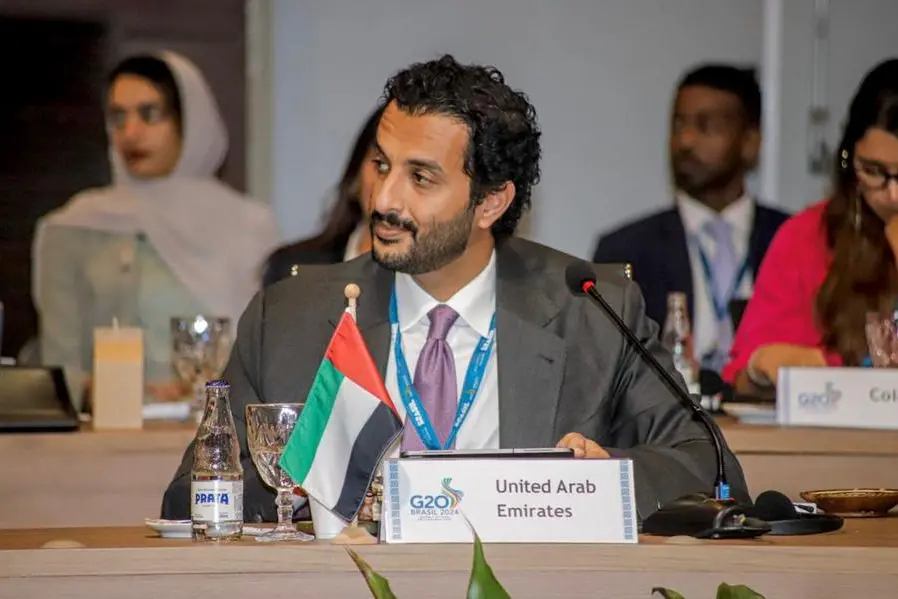Emirates Post Privatisation Anchors UAE Growth Outlook
UAE advances Emirates Post privatisation with non-oil GDP growth near 4.8%; DFMGI and ARMX capture reform sentiment, while CL=F oil benchmarks and EMB spreads reflect global risk and fiscal positioning.

The United Arab Emirates is advancing a strategic review of growth prospects alongside a formal study into the privatisation of Emirates Post, highlighting a transition toward market-led productivity gains in a region still anchored by hydrocarbon cycles.
Real GDP growth for the UAE is projected at 4.8% in 2025 and 5.0% in 2026, driven by non-oil expansion as OPEC+ output stabilises and hydrocarbon GDP recovers from the 2024 low. Consumer inflation has remained within a 2%–3% corridor in 2025, and consensus forecasts hold the full-year average near 1.6%. The dirham’s peg at AED 3.673 per US dollar remains a pillar of macro stability, ensuring imported inflation is limited and allowing structural reform to deliver incremental growth.
The Emirates Post privatisation study is aimed at operational efficiency, not merely fiscal optics. Postal operations are central to last-mile logistics, digital identity, and e-commerce delivery. Introducing private capital and performance incentives could increase throughput per employee and compress delivery costs through automation, network rationalisation, and data-led logistics.
With the non-oil sector accounting for over 70% of GDP, a 5%–10% productivity uplift in postal logistics over two to three years would lower costs for SMEs, improve reliability for digital commerce, and reduce working-capital constraints across supply chains. The S&P Global UAE PMI reached 54.2 in September 2025, the highest in seven months, reflecting robust demand, improved supplier delivery times, and sustained services hiring. These indicators reinforce the context for service-sector reform and the integration of postal logistics into the broader productivity drive.
The macro transmission channel is explicit. Non-oil GDP growth in the mid-4% range in 2025 and 2026 coincides with record inward investment; the UAE attracted AED 167.6 billion (US$45.6 billion) in foreign direct investment in 2024, reinforcing its position in the global top tier. A restructured Emirates Post, with clear KPIs and regulatory clarity, would enhance the risk-adjusted returns of logistics and infrastructure investment. Proceeds from any minority stake sale or concession are likely to be ring-fenced for digital and logistics infrastructure under existing fiscal frameworks. The UAE’s consolidated government budget remains in surplus, supported by stable oil receipts—front-month WTI (CL=F) averaged in the upper-$70s to mid-$80s per barrel through 2025. This fiscal stability supports reform without cyclical pressure to cut spending.
Financial markets price sustained reform delivery. UAE hard-currency sovereign spreads remain tight versus emerging-market comparators, a reflection of robust balance sheets and predictable fiscal management. Successful execution on SOE reform—improving disclosure, reducing off-balance-sheet liabilities, and codifying service delivery—can compress sovereign and quasi-sovereign risk premiums by 10–30 basis points over the subsequent four quarters, as seen in prior regional divestments. Locally, logistics equities such as Aramex (ARMX) on DFM and SAL Saudi Logistics (4263.SR) have attracted investor flows on operational scale and efficiency narratives. The Dubai Financial Market General Index (DFMGI) has tracked reform expectations, consolidating earlier gains in 2025 as investors rotate toward asset-light, efficiency-driven business models.
Comparative analysis within the Gulf Cooperation Council shows a repeatable pattern. Where utility and transport divestments were phased—asset unbundling, KPI-linked contracts, minority listings—operating margins increased by 200–400 basis points over two to three years and transparency standards improved across sectors. The UAE’s approach, combining retained state control with private-sector incentives, is consistent with this model. With a stable exchange rate, productivity gains translate into a disinflationary impulse, easing the policy trade-off between output growth and price stability.
Forward-looking indicators for this reform cycle are measurable and time-anchored. By mid-2026, transaction structure—IPO, trade sale, or concession—should be defined with public service KPIs published. Over the next four quarters, three metrics are critical: postal productivity (parcels per employee, on-time delivery) rising by at least 10%; logistics cost-to-value ratios in non-oil trade narrowing, as seen in improved PMI delivery metrics; and UAE risk premia compressing by 10–30 basis points versus EMB index levels.
If these targets coincide with GDP growth near 4.8%–5.0% and inflation anchored near 2% through 2026, the UAE will demonstrate a durable upgrade in diversification and investability for global allocators.





